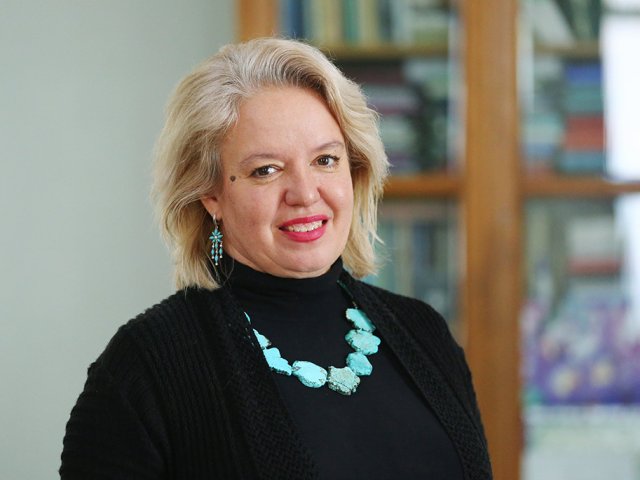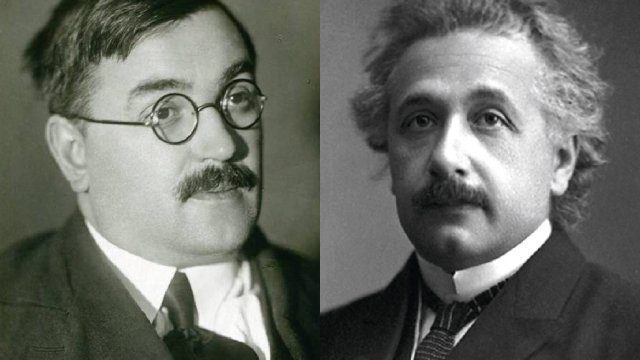Official:
Pafnuty Lvovich Chebyshev. May 4 (16), 1821 – November 26 (December 8), 1894. Russian mathematician and mechanical engineer, founder of the Saint Petersburg mathematical school, academician of the Saint Petersburg Academy of Sciences
Life and Work:
1. In the book Prime Obsession, John Derbyshire writes about how difficult it was for him to search for Pafnuty Chebyshev’s scientific materials. The problem was that Derbyshire counted 32 transcription options of Chebyshev’s last name. Indeed, his last name has several letters that are ambiguously translated in the Latin alphabet, which makes the search against library databases quite difficult. By the way, this book written by the American author of popular science books is devoted to the theory of prime numbers, and Pafnuty Chebyshev contributed in the development of this theory.
2. The letter “ё” was not mandatory in writing for a long time, therefore, the Russian mathematician’s last name is often pronounced incorrectly – with an emphasis laid on the first, not the last syllable.
3. His colleagues remarkably described the scientific merits of one of the greatest European mathematicians: “Chebyshev’s works bear the imprint of genius. He invented new methods to solve many difficult questions that were raised long ago and remained unresolved.” That’s right: Pafnuty Lvovich obtained fundamental results in the theory of numbers and theory of probability, developed a general theory of orthogonal polynomials and theory of uniform approximations – all of his scientific merits cannot be enumerated.
4. The offspring of a rich and old noble family was born in the village of Okatovo, Kaluga Governorate. Chebyshev's father, Lev Pavlovich, took part in the Patriotic War of 1812 and took Paris in 1814.
5. His mother, Agrafena Ivanovna, taught the future scientist reading and writing, and his cousin taught him arithmetic and French. Biographers note that the boy was especially interested in all kinds of mechanisms. Pafnuty retained this interest in his mature years.
6. When Chebyshev was a teenager, he was taught by the best teachers in Moscow, where the family moved to give their children good education. In 1837, sixteen-year-old Pafnuty entered the Department of Physics and Mathematics Department of the Philosophy Faculty at Moscow University.
7. Already in his second year, Pafnuty Chebyshev wrote a paper on finding the roots of the nth degree equation. Later, he received a silver medal in the competition of student works for this paper.
8. The difficult financial situation did not interfere with his persistent studies in science: while Chebyshev was studying at the university, famine burst out in Russia, and his parents went bankrupt.
9. Pafnuty Lvovich brilliantly defended his master's thesis On the Elementary Analysis of the Theory of Probability. Chebyshev was invited as an associate professor to Saint Petersburg University. To get the right to give lectures there, Chebyshev had to defend another thesis, On Integration with the help of Logarithms. At Saint Petersburg University, Chebyshev taught courses in higher algebra, the theory of numbers, geometry, theory of elliptic functions, theory of probability and applied mechanics.
10. When he defended his third – doctoral – thesis The Theory of Congruences, 29-year-old Chebyshev became a professor at Saint Petersburg University and had held this rank for more than three decades.
11. In 1852, Chebyshev took a long scientific trip to Europe. He was studying mechanical engineering and visiting plants, factories and museums of machines and mechanisms in the United Kingdom, France, and Belgium. During this trip, the great Russian mathematician met the outstanding mathematicians and mechanical engineers of his time, e.g., A. Cauchy, L. Foucault and others.
12. His works in applied mechanics made Chebyshev an adjunct professor of the Saint Petersburg Academy of Sciences. His works on the theory of parallel link mechanisms and theory of functional approximation promoted his election as an ordinary academician.
13. In 1863, Chebyshev took an active part in the development of the University Statute. Historians consider this statute to be the most successful university regulations in Russia in the 19th and early 20th centuries.
14. Pafnuty Lvovich died right at his desk. He was buried in his estate in the village of Spas-Prognanye, Kaluga Governorate, near the Church of the Transfiguration of Christ, next to his parents.
15. Biographers note that Chebyshev's creative method was distinguished by his desire to link mathematical problems with natural science and engineering and to combine abstract theory with practice. Pafnuty Lvovich believed that “... the convergence of theory with practice gives the most beneficial results, and not only practice benefits from this: sciences develop under its influence: it provides them with new research subjects or opens up new aspects in the subjects that have been known for a long time... if theory benefits a lot from new applications of old methods or from new developments, then it gains even more from the discovery of new methods, and sciences find themselves a true mentor in practice in this case.”
16. It is funny that the founder of the Saint Petersburg scientific school of mathematics greatly frightened Parisian fashion designers. He gave them a lecture on how mathematics can help in fashion design and suggested for simplicity that the human body is ball-shaped.
17. One of Chebyshev's articles is extraordinarily called On Pattern Cutting. There is no need to think that the mathematician decided to retrain as a tailor: the article was devoted to the differential geometry of surfaces. In this paper, the scientist introduced a new class of coordinate grids known as Chebyshev networks.
18. Pafnuty Lvovich Chebyshev very cleverly calculated the distance between Moscow and Saint Petersburg. It is necessary to determine the doubled difference between the latitudes of Moscow and Saint Petersburg and the difference between their longitudes. The greater number should be multiplied by 7, the smaller number should be multiplied by 3. Then it is necessary to add both numbers and divide the result by 8. The result will be the distance between Moscow and Saint Petersburg in versts.
19. An acute need for qualified technical personnel arose in Russia in connection with the rapid development of mechanical engineering in the second half of the 19th century. Chebyshev stood against the proposal to train engineers at the physics and mathematics departments of universities. He believed that it would be more productive and expedient to train engineers in specialized higher technical education institutions, while universities should train specialists in fundamental sciences. The great mathematician was heard, and Russia started founding technical universities of various profiles.
20. Chebyshev and his numerous students formed the core of the scientific mathematical team that eventually became known as the Saint Petersburg mathematical school.
21. The full five-volume collection of Chebyshev’s works was published in 1944-1951. It gives an idea of the breadth of the great mathematician and engineer’s scientific interests. The first volume contains his works on the theory of numbers, the second and third volumes – his works on mathematical analysis, and the fourth volume – on the theory of mechanisms. The fifth volume comprises his works on other areas of mathematics and mechanics as well as the biography of the scientist.
22. Chebyshev’s greatest achievements include his contribution to solving the prime number theorem, central limit theorem of the theory of probability, proof of the law of large numbers, and creation of the theory of uniform approximations. The great Russian mathematician stood at the origins of a new scientific discipline, the theory of mechanisms and machines. Now it is now impossible to imagine engineer training without this theory.
23. Pafnuty Chebyshev was the member of the Berlin Academy of Sciences, Academy of Sciences of the Institute of Bologna, Paris Academy of Sciences, Royal Society of London, Royal Swedish Academy of Sciences and many others for a total of 25 institutions.
24. Chebyshev is depicted on the building of the Faculty of Mathematics and Mechanics of Saint Petersburg State University, and his bust is installed in the Alley of Scientists of Moscow State University.
25. A ridge on Svalbard, lunar crater and asteroid discovered in 2010 were named after Chebyshev. Once in every five years, the Russian Academy of Sciences awards the P.L. Chebyshev Gold Medal for outstanding results in mathematics.





















